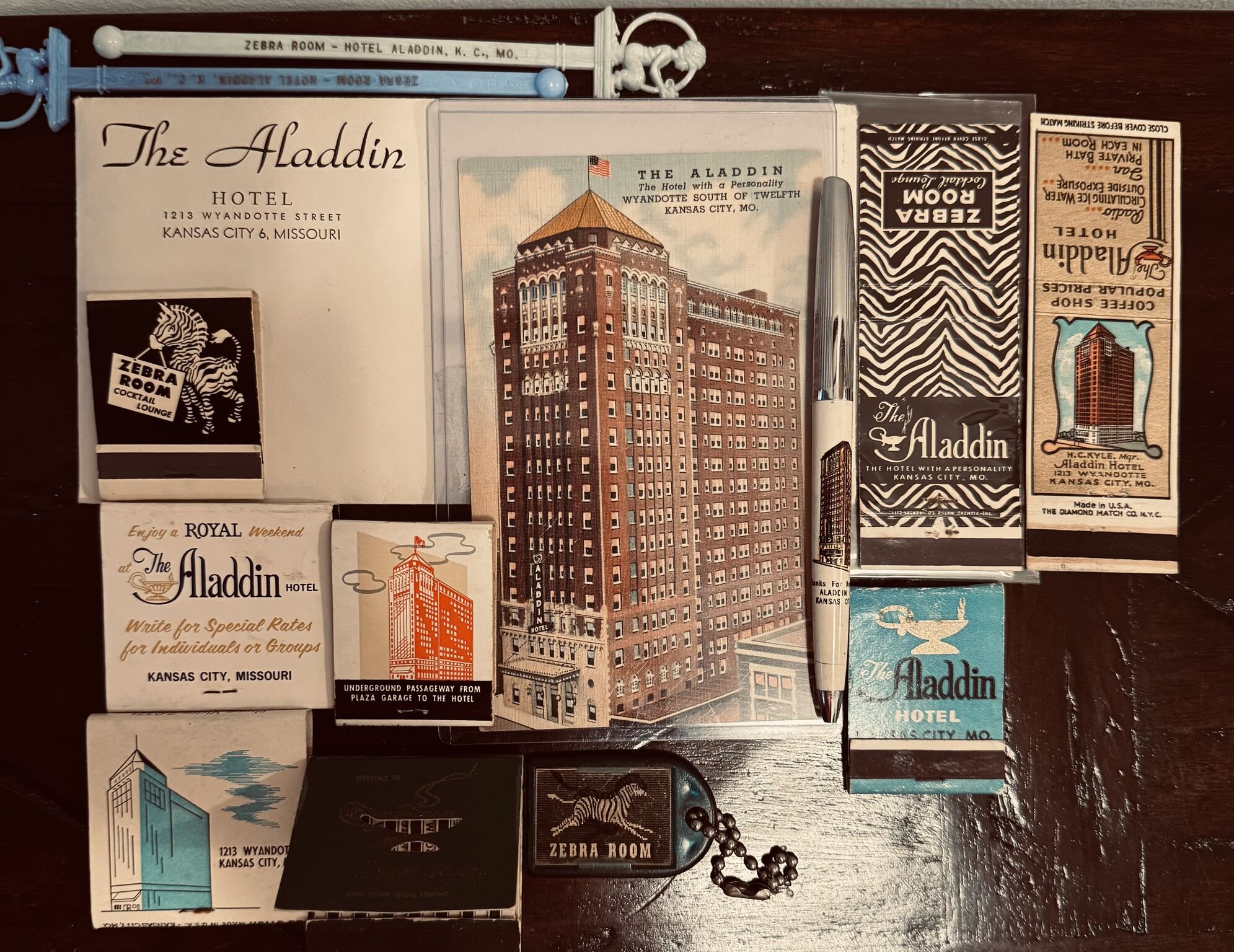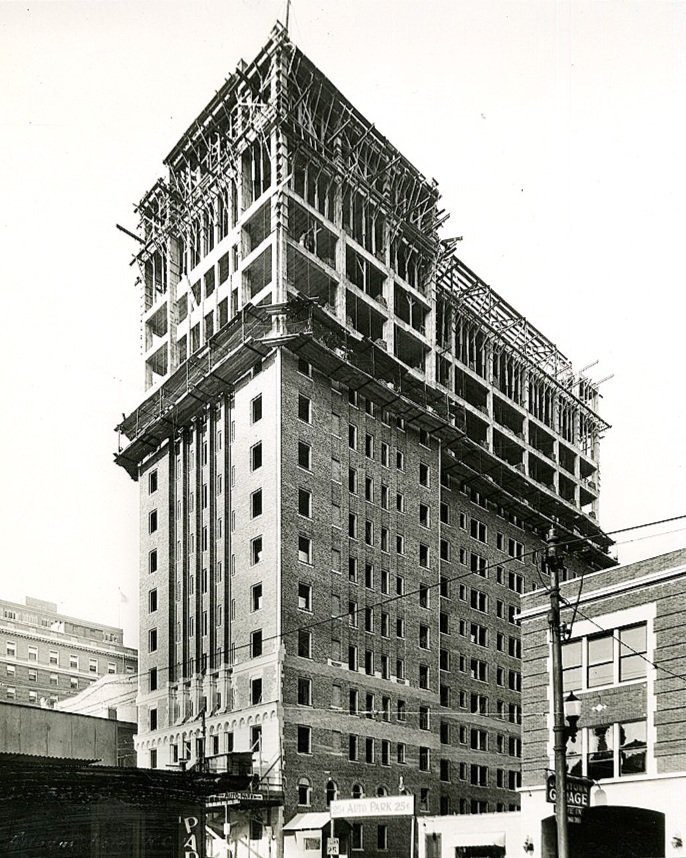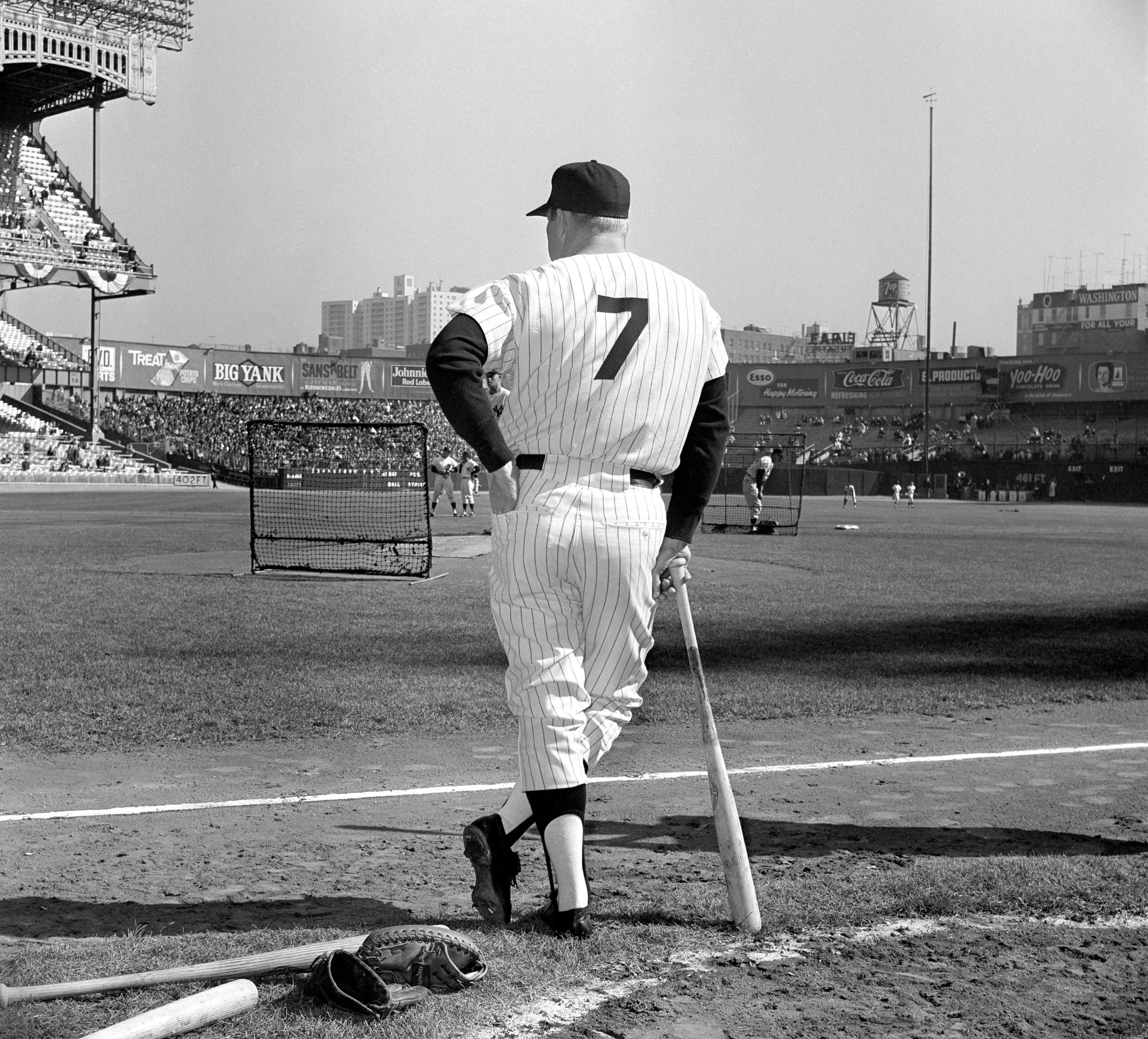Aladdin’s History
A legacy of Elegance and Innovation
Built in 1925, the Aladdin Hotel quickly became a beacon of luxury and a symbol of Kansas City’s prosperity during the Roaring Twenties.
Designed by architect Phillip T. Drotts, the 16-story Italian Romanesque structure featured striking terra cotta detailing, an iconic pyramidal roof, and one of the city's first rooftop gardens. “A Hotel with Personality” was the original slogan.
The Aladdin led the way in innovation, being among the first hotels to offer private bathrooms, climate control, and a soundproof ballroom floor. And for a brief period, was the tallest building in the KC Skyline.
Its allure attracted prominent figures like Mickey Mantle, Greta Garbo, and Al Capone, who all left their mark on its rich history.

If these walls could talk. . .
-
Lore around a pool at The Aladdin begun when architects couldn’t determine the reason for a large plate beneath the 16th floor.
Turns out, the original architects built a large gap between the 16th and 15th floor, not for a pool, but for a sound proofing solution for guests on the 15th. Quite advanced for the time, but a polite & intentional design.
-
After completion in 1925, architects used copper plating for the pyramid roof tile. An addition to make them truly stand out, as they were the tallest building in Kansas City at the time.
Due to natural elements beating away at the copper, by the late ‘60s had refinished the top with blue tile, which remains today.
As decades passed, the hotel mirrored the highs and lows of downtown Kansas City, experiencing periods of both prominence and decline. Following a significant restoration in 2007, the Aladdin once again stood as a boutique gem in the heart of the city.
Today, it embarks on a new chapter, symbolizing resilience and a commitment to preserving history.












